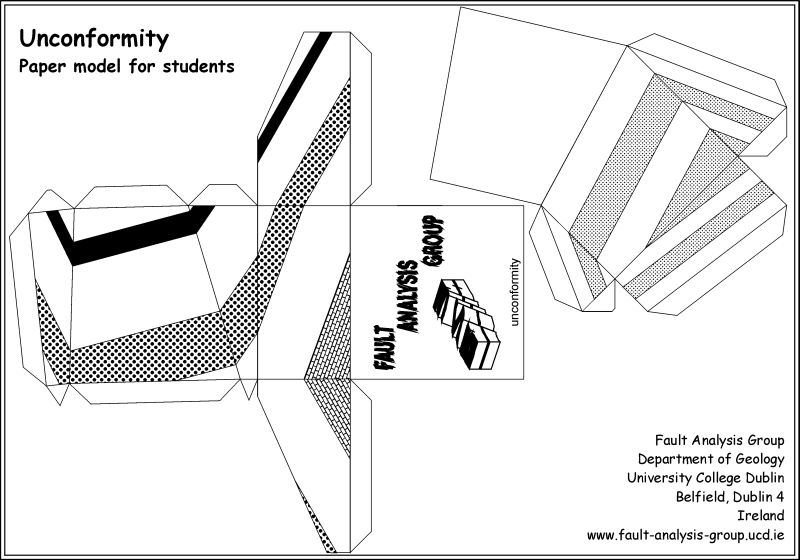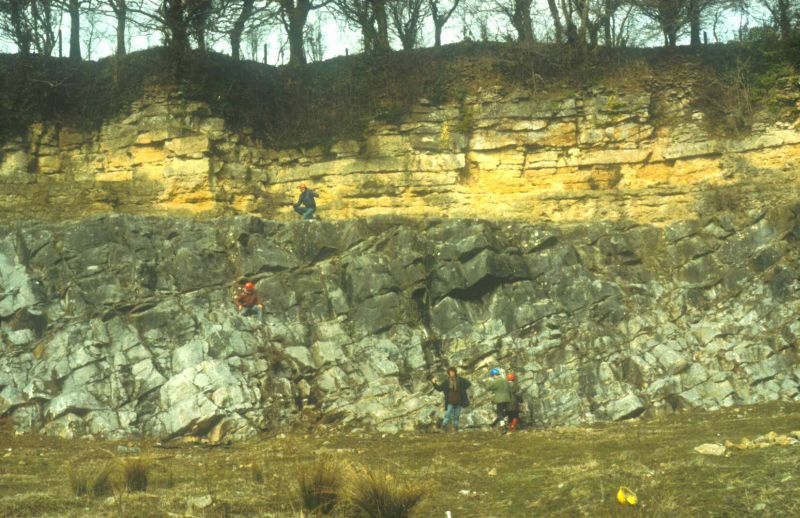The paper model consists of two parts, representing the strata below and above the unconformity. The model illustrates how unconformities can be detected both in cross-section and map view. Note that the angular relationships between the strata below and above the unconformity depend on the orientation of the cross-section. One section suggests a low angle unconformity whereas another section, at right angles, suggests a high angle unconformity. Using a stereonet try to work out the orientation of bedding in the older rocks at the time they were eroded. Hint: The younger rocks have bedding parallel to the unconformity, suggesting that the unconformity was originally horizontal; this assumption is not necessarily valid but is fine for the purposes of this exercise.

